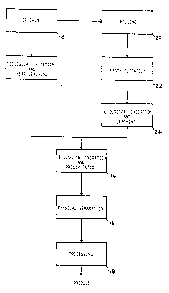Some of the information on this Web page has been provided by external sources. The Government of Canada is not responsible for the accuracy, reliability or currency of the information supplied by external sources. Users wishing to rely upon this information should consult directly with the source of the information. Content provided by external sources is not subject to official languages, privacy and accessibility requirements.
Any discrepancies in the text and image of the Claims and Abstract are due to differing posting times. Text of the Claims and Abstract are posted:
| (12) Patent: | (11) CA 2065491 |
|---|---|
| (54) English Title: | METAL RECOVERY |
| (54) French Title: | RECUPERATION DE METAL |
| Status: | Term Expired - Post Grant Beyond Limit |
| (51) International Patent Classification (IPC): |
|
|---|---|
| (72) Inventors : |
|
| (73) Owners : |
|
| (71) Applicants : |
|
| (74) Agent: | SMART & BIGGAR LP |
| (74) Associate agent: | |
| (45) Issued: | 2003-07-08 |
| (22) Filed Date: | 1992-04-07 |
| (41) Open to Public Inspection: | 1992-10-09 |
| Examination requested: | 1999-04-06 |
| Availability of licence: | N/A |
| Dedicated to the Public: | N/A |
| (25) Language of filing: | English |
| Patent Cooperation Treaty (PCT): | No |
|---|
| (30) Application Priority Data: | ||||||
|---|---|---|---|---|---|---|
|
A method of extracting metal from sulphide ores, which includes the steps
of solubilizing the metal into a sulphate solution, and generating sulphide
by anaerobic bacterial action in the sulphate solution, thereby to cause
the metal in the solution to be precipitated as an insoluble sulphide, thus
upgrading the metal into a highly concentrated form.
Note: Claims are shown in the official language in which they were submitted.
Note: Descriptions are shown in the official language in which they were submitted.

2024-08-01:As part of the Next Generation Patents (NGP) transition, the Canadian Patents Database (CPD) now contains a more detailed Event History, which replicates the Event Log of our new back-office solution.
Please note that "Inactive:" events refers to events no longer in use in our new back-office solution.
For a clearer understanding of the status of the application/patent presented on this page, the site Disclaimer , as well as the definitions for Patent , Event History , Maintenance Fee and Payment History should be consulted.
| Description | Date |
|---|---|
| Inactive: Expired (new Act pat) | 2012-04-07 |
| Inactive: IPC from MCD | 2006-03-11 |
| Inactive: IPC from MCD | 2006-03-11 |
| Grant by Issuance | 2003-07-08 |
| Inactive: Cover page published | 2003-07-07 |
| Inactive: Final fee received | 2003-04-07 |
| Pre-grant | 2003-04-07 |
| Notice of Allowance is Issued | 2002-12-12 |
| Letter Sent | 2002-12-12 |
| Notice of Allowance is Issued | 2002-12-12 |
| Inactive: Approved for allowance (AFA) | 2002-11-28 |
| Amendment Received - Voluntary Amendment | 2002-10-03 |
| Inactive: S.30(2) Rules - Examiner requisition | 2002-04-04 |
| Amendment Received - Voluntary Amendment | 2000-03-07 |
| Inactive: Application prosecuted on TS as of Log entry date | 1999-04-22 |
| Letter Sent | 1999-04-22 |
| Inactive: Status info is complete as of Log entry date | 1999-04-22 |
| All Requirements for Examination Determined Compliant | 1999-04-06 |
| Request for Examination Requirements Determined Compliant | 1999-04-06 |
| Inactive: Applicant deleted | 1997-10-27 |
| Deemed Abandoned - Failure to Respond to Maintenance Fee Notice | 1997-04-07 |
| Inactive: Adhoc Request Documented | 1997-04-07 |
| Application Published (Open to Public Inspection) | 1992-10-09 |
| Abandonment Date | Reason | Reinstatement Date |
|---|---|---|
| 1997-04-07 |
The last payment was received on 2003-03-31
Note : If the full payment has not been received on or before the date indicated, a further fee may be required which may be one of the following
Please refer to the CIPO Patent Fees web page to see all current fee amounts.
Note: Records showing the ownership history in alphabetical order.
| Current Owners on Record |
|---|
| GENERAL MINING, METALS AND MINERALS LIMITED |
| BILLITON INTELLECTUAL PROPERTY B.V. |
| Past Owners on Record |
|---|
| ALAN KEITH HAINES |